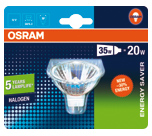This is just a quick post to mention that I’ve now ordered a new gas boiler and solar hot water cylinder, ready for the renewal of my central heating system this summer.
Boiler sizing turned out to be a bit tricky. My current boiler, installed by the house’s previous owners in about 2001, is a Potterton Osprey CL150 which has a rated output of 44kW (yes, 44 – there I’ve said it!). As I might have mentioned previously, it always made an impressive ‘whumph’ when firing but last winter, despite us living in pretty cold conditions (e.g. ice on the insides of some of the windows) we still had a gas bill heading towards £1000.
So I’ve done a room-by-room heat loss calculation, followed by some whole house estimates (EST and SEDBUK) as a cross-check. The really difficult figure is determining the U-value for my 18″/450mm solid stone walls (limestone with rubble core). Estimates vary wildly from 1.05 to 2.13 so I’ve ended up taking the average of 1.6W/m2K – I suspect soft Dorset limestone is at the higher end of this range really. By my calculations, with the insulation as it is now, I need 23kW peak and, with the improved loft and some upstairs internal wall insulation planned for this summer, this falls to 19kW. This is based on an estimate of 3900W for ventilation losses (by volume) and 2000W for hot water. As a final sanity check I looked at our gas consumption last winter (~27,000 kWh over 6 months) and the 6 hours per day the boiler was running, and it conveniently came out at 25kW average.
My short-listed manufacturers were:
- Worcester-Bosch
- Vaillant
- Viessmann
- Broag-Remeha
As you might guess, I’m keen to install reasonably sophisticated controls to maximise the amount the boiler is condensing, as well as to be able to control which rooms are heated, to what temperature and when.
After much deliberation I’ve bought the lowest output Viessmann Vitodens 100-W (WB1B) system boiler which is rated at 26kW. As an aside, the staff on the Viessmann technical support line are very helpful. This is still rather lower than the current 44kW rating but I’ve convinced my plumber that I’m happy to risk a smaller size on the basis that: (more…)



 I found a UK website at
I found a UK website at 
